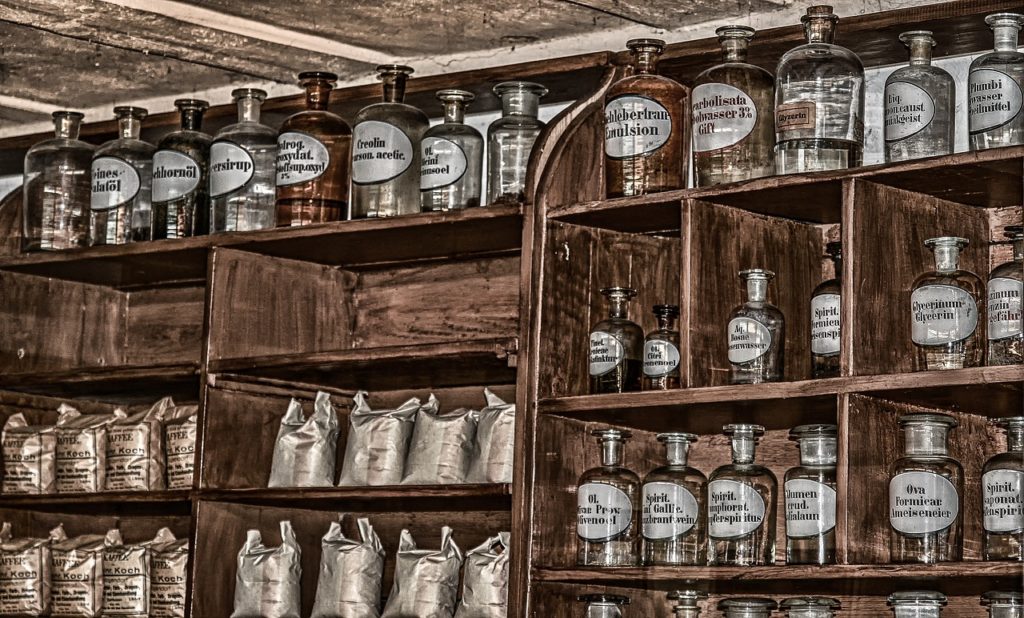Summary: The Nootropic Geek’s BIG List of Nootropics
As the title suggests, this is my (ongoing) list of nootropics. Here you’ll find a comprehensive compendium of (mostly natural) nootropics, namely the types of nootropics you’ll find in many OTC nootropic supplements. Looking forward, I aim to update this list with more powerful, synthetic cognitive enhancers, such as racetams and other various smart drugs. To learn more about my favorite supplements, hit the following link:
The simplest definition of “nootropic” involves any substance or practice that enhances cognition. Brain bio-hacking is the cool-guy’s term for nootropics. For a stickler like me, nootropics are any safe, side-effect-free substances that enhance cognition. But even so, the common denominator here is nootropics enhance cognition.
Having said that, a lot of things enhance cognition. Yet, a lot of things that enhance cognition aren’t necessarily nootropic — at least not by the standards of Dr. Corneliu Giurgea, the guy who coined the term “nootropic”. According to him, nootropics must not only enhance cognition but they must protect it against the usual side effects associated with pharmaceutical drugs.
Thus, you won’t find Adderall on my list of nootropics below.
Instead, what you will find is a list of the most popular, generally healthy nootropics currently available, alongside their respective descriptions. Because the list of what’s considered nootropic these days seems to be constantly expanding, so, too, does my list of nootropics expand with the times. Having said that, you won’t find too many of the synthetics on this list — I leave that task to Reddit and Longecity.
But for a general guide on all the natural and/or relatively safe nootropics out there, here’s my list.
Page Contents
5-HTP
5-hydroxy L-tryptophan, or 5-HTP (if you’re lazy), is an amino acid neurotransmitter that regulates brain chemical statuses related to sleep, mood, and appetite. Best known for its precursor role for serotonin synthesis, 5-HTP is often viewed as an antidepressant nootropic with enough serotonergic punch to warrant a caution: do not take concurrently with pharmaceutical antidepressants.
Due to its simultaneous effects on mood and appetite, 5-HTP is often found in fat burner supplements; however, its nootropic role places it more as a mood booster than a legitimate cognitive enhancer. Even so, 5-HTP may benefit work productivity otherwise affected by poor mood.
One study found 5-HTP supplementation to increase subjective mood rating by 37% (study). That’s purdy darn good. But again: take with caution if you’re supplementing other serotonergic substances — e.g., St. John’s Wort or pharmaceutical antidepressants. More on 5-HTP.
Acetyl L-Carnitine (ALCAR)
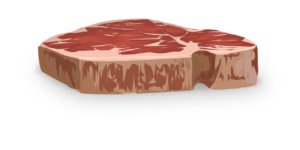
As an antioxidant amino acid, Acetyl-L-Carnitine (ALCAR) is somewhat of a multi-purpose supplement compound. Some supplement users enjoy carnitine for its potential fat burning benefits, others (myself included) prefer ALCAR for its mitochondrial brain energy enhancement effects.
How ALCAR is believed to work: ALCAR seems to increase delivery of fatty acid chain “energy fuel” to brain mitochondria, in turn improving mitochondrial ATP energy output. Partially due to the natural age-related decline in ALCAR levels, this amino acid seems to work best for elderly cognition. However, the potential neuroprotective benefits of this energy booster should garner the attention of younger nootropic enthusiasts as well. More on ALCAR.
Alpha Lipoic Acid (ALA)
Known as the Universal Antioxidant, Alpha Lipoic Acid (ALA) is a free radical reducing fatty acid that’s capable of crossing the blood-brain barrier. Thanks to the fat soluble nature of this compound, ALA may freely work across brain structures, eliminating free radical toxins trapped in neuronal tissue.
Similar to ALCAR, ALA also possesses neuroprotective benefits on the mitochondrial level, potentially enhancing ATP energy output in a way that synergizes with other mitochondrial enhancing antioxidants (such as ALCAR). When coupled with other well-documented antioxidants, ALA seems to deliver significant anti-aging benefits, making it a great “now-and-later” nootropic compound for general cognitive improvement and longevity.
R-Lipoic Acid seems to be the most active form of ALA. More on Alpha Lipoic Acid.
Alpha-GPC
Popular in both nootropic and ergogenic supplements, alpha-GPC is one of the more effective cholinergics, supplying a fat concentration of choline for acetylcholine and phosphatidylcholine synthesis. Nerds and meatheads enjoy alpha-GPC more or less for the same reason: the compound’s ability to improve acetylcholine activity. For the nerd, a rise in acetylcholine correlates with a rise in high-order thinking and synaptic plasticity. And on the meathead end of things, acetylcholine sharpens the neuromuscular junction pathway, the point at which neurons connect to muscle tissue.
In some European nations, alpha-GPC is prescribed for age-related cognitive decline related to choline. However, most over-the-counter uses of alpha-GPC involve enhancing some aspect of mental and muscular performance, as well as memory and focus. More on Alpha-GPC.
Aniracetam
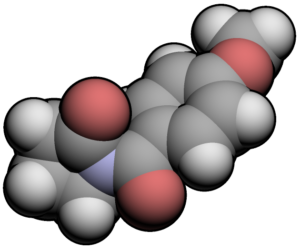
Compared to piracetam, the most basic racetam form, aniracetam seems to deliver the same mental performance enhancing benefits — only quicker and to a more noticeable degree. And, yet, similar to piracetam, aniracetam is generally safe for long-term use, rarely inducing any cognitive side effects.
Apoaequorin
That’s right: this is that glowing jellyfish protein made famous by Prevagen. Discovered in 1962 by biochemist geek Osamu Shimomura, apoaequorin is a protein that binds to calcium, a chemical process that emits a glowing blue light as a result. The idea behind supplementing apoaequorin as a nootropic: reverse calcium build-up in the brain — a key culprit in age-related cognitive decline.
As such, apoaequorin is primarily used as a neuroprotective and restoration agent. The benefits attributed to apoaequorin (by Prevagen) include:
- Improve verbal memory
- Reduce need for reminders
- Improve memorization of driving directions
- Enhance sleep quality and duration
And more. Only one problem with these claims: the studies performed on apoaequorin were never peer-reviewed and, thus, are illegitimate. Not only that but proteins such as apoaequorin often denature via the digestive process before entering the body. Despite the excitement and promise, odds are apoaequorin doesn’t amount to much as an orally administrated supplement.

Artichoke (Cynarin)
When swamped with butter, artichokes are amazing. However, buttery artichokes aren’t exactly what I’m referring to here. Artichoke extracts, on the other hand, which typically include the likes of cynarin and luteolin, seem to benefit cognition in a couple ways:
- Cynarin – antioxidant with cerebral circulatory boosting potential.
- Luteolin – antioxidant, anti-inflammatory with cAMP protection benefits.
Low cAMP levels have been linked to poor energy and depression. Modulating cAMP activity may help memory and other cognitive performance measures. Granted, much of this remains theoretical. There are several other nootropics with similar cognitive benefits that seem to work better than artichoke extract — or at least have better research on their side.
Ashwagandha

Ashwagandha is an interesting adaptogen, assisting with mental and physical stress by supporting energy, strength, mental processing speed, and relaxation. In fact, so much relaxation that ashwagandha might actually qualify as a cognitive impairer more so than a cognitive enhancer — at least at high doses.
Yet, it’s the sedative effects of ashwagandha that I like best. This is a very groovy herb and/or herbal extract, reliable for quick, calming, feel-good mental relaxation. And while you’re relaxing on ashwagandha’s sedative effects, you can also relax knowing that this herb is accomplishing a bunch of greatness for your stress and regeneration levels. More on Ashwagandha.
B Vitamins
The best way to supplement B Vitamins is to supplement them all. And if you can’t supplement them all — or you simply don’t want to invest in a complete B vitamin complex — then at least search for a nootropic supplement with vitamins B6, B9, and B12, as these seem to possess the best brain benefits. Having said that, all B vitamins contribute to proper nervous functioning, co-contributing to hundreds of bio-pathways. Individually, B vitamins split into the following:
- Vitamin B1 – or thiamine; important to infant brain development and brain energy. Sulbutiamine works by synthesizing a B1-B1 bond for enhanced cognitive results.
- Vitamin B3 – or niacin; a popular B vitamin in pre-workout supplements for effects on circulation, metabolic energy, and mental performance.
- Vitamin B5 – or pantothenic acid; while B5-deficiency is rare, the vitamin is a necessary co-factor in the synthesis of coenzyme-A, required for acetylcholine synthesis.
- Vitamin B6 – best taken as pyridoxal-5-phosphate; important to mood and mental performance, B6 protects against homocysteine damage and assists with catecholamine synthesis.
- Vitamin B9 – or folic acid; best known for its pregnancy health support, B9 is a key to healthy development and crucial to red blood cell formation.
- Vitamin B12 – best taken as methylcobalamin; B12-deficiency ramps up in the old age, impairing mental performance and brain energy metabolism.
BioGenesis™ is a premium B vitamin brand supplied by Mind Lab Pro and Performance Lab Mind. One of the best B vitamin short-stacks available.
Bacopa Monnieri
As one of the most popular nootropic herbs used in natural nootropic supplements, Bacopa monnieri‘s popularity is warranted by its well-researched cognitive benefits and long use in the Ayurvedic health tradition. It’s a multi-purpose herbal nootropic that I value primarily as a student’s nootropic, due to the herb’s boosts on memory and learning. The bioactive constituents of Bacopa monnieri, bacosides, seem to exert significant anti-stress, pro-cholinergic effects, in addition to improving cerebral circulation, GABA and serotonin, and other cognitive measures.
Altogether, Bacopa qualifies as an adaptogen, study aid, mental performance enhancer, and mood booster. It’s a great nootropic herb to supplement with your daily stack, and to keep supplementing daily, as this nootropic requires several weeks of administration to take full effect. But once achieved, the benefits of Bacopa are long-term, promoting cognitive functions for the long haul. More on Bacopa Monnieri.
Cat’s Claw

Popularized by Onnit (Alpha BRAIN), Cat’s Claw (or Uncaria tomentosa) is a South American woody herb, traditionally used in Peruvian health rituals for holistic healing. Today, cat’s claw is primarily valued for its antioxidant, anti-inflammatory neuroprotective benefits. It’s not exactly a cognitive enhancement right NOW! nootropic, but cat’s claw may improve cerebral circulation while diminishing amyloid plaque build-up that’s associated with cognitive decline.
Essentially, cat’s claw is an investment in long-term health care. Current research is somewhat lacking on the cognitive potential of this nootropic herb, but it is a promising brain botanical nonetheless. Onnit is the only company that supplies the ac-11® brand of cat’s claw extract, which has been clinically tested as part of Alpha BRAIN’s total ingredient profile.
Centrophenoxine
If you like DMAE, then you’ll love Centrophenoxine! In fact, if you hate DMAE, then you may still like centrophenoxine, given that this compound seems to accomplish what DMAE is believed to accomplish …but often doesn’t for many. And so: what does centrophenoxine accomplish? A few things:
- Increased glucose uptake into neurons.
- Enhanced cerebral circulation.
- Boosted acetylcholine levels.
- Improved energy metabolism.
Centrophenoxine seems to improve elderly cognition in particular by reducing neurotoxin build-up in the brain, a common offender in age-related cognitive decline. For all ages, daily low doses of centrophenoxine isn’t a bad idea for general brain health and function enhancement.
Citicoline
Is Citicoline the G.O.A.T. of natural nootropics?? It’s pretty damn good, offering a dual supply of choline (a precursor to acetylcholine and phosphatidylcholine) and cytidine (a precursor to brain energizing uridine). As compared to, say, alpha-GPC, another cholinergic nootropic, citicoline works better for brain boosting due to the cytidine addition. Essentially, the respective bio-activities for each part of citicoline include:
- Choline – raw building block material for acetylcholine and phosphatidylcholine syntheses, improving high-order cognition, memory, learning, and focus.
- Cytidine – converts to uridine, a brain booster nucleotide that enhances synaptic plasticity, neuroregeneration, and ATP energy production.
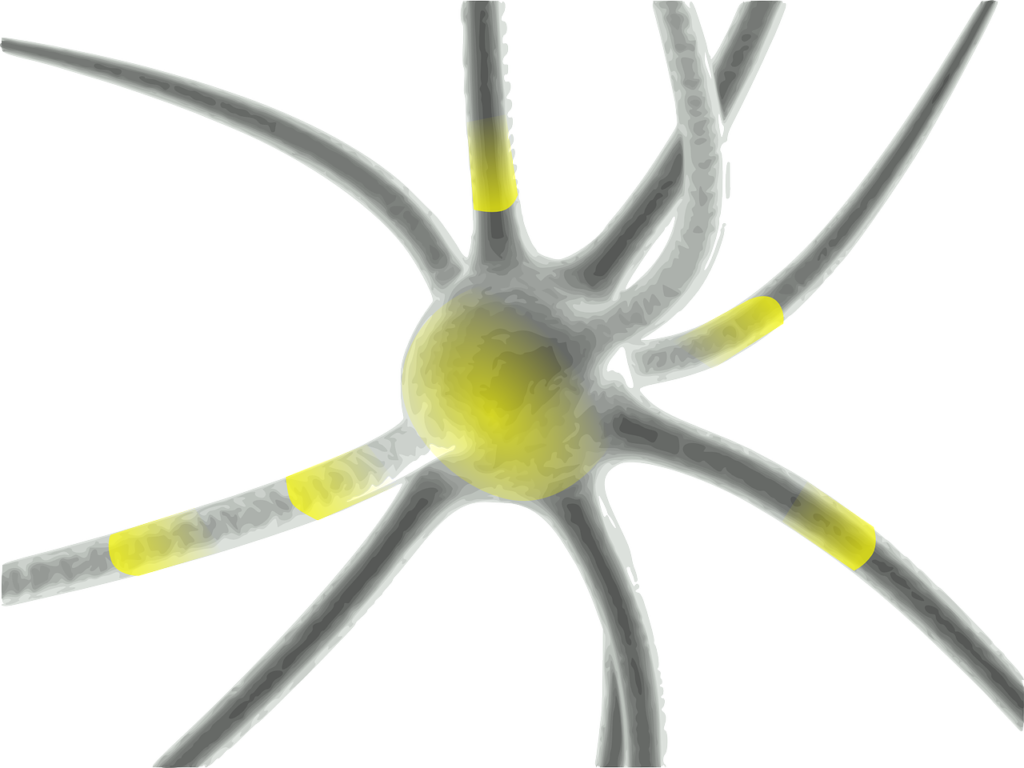
Citicoline is a great foundation nootropic for its energy boosting benefits. By increasing the brain’s natural energy production pathways, citicoline pumps up the brain’s capacity to manage, maintain, and repair itself. And if you’re big on racetams and racetam-like nootropics, citicoline may complement such smart drugs cholinergic requirements, reducing the brain burn associated with them. More on Citicoline.
Coluracetam
Coluracetam, or MKC-231, is a type of racetam and a choline uptake enhancer believed to improve mental performance, memory, learning, and mood. Initially designed as a pharmaceutical drug for Alzheimer’s, coluracetam has descended to colloquial cognitive enhancement. It’s not the most popular racetam — nor all that well-known as a nootropic in general — but its cholinergic enhancement properties do hold some promise.
CoQ10 and Ubiquinol
Is it CoQ10 or is it Ubiquinol? Let’s just say both, as these two guys are essentially two forms of the same compound. Highly concentrated in the brain, these antioxidant compounds seem to play integral roles in mitochondrial energy production — and their antioxidant statuses earn them a special neuroprotective status as well.
As we age, CoQ10 and Ubiquinol levels decline, contributed to a loss in brain energy and mental function. This is why CoQ10 and Ubiquinol are popular supplement options in the elderly health aisles of, say, CostCo (in case you were curious… I certainly was). Supplementing either CoQ10 or Ubiquinol may decrease the negative effects of age-related cognitive decline — or statin-related cognitive decline, seeing that statin drugs often deplete natural CoQ10 levels.
Younger nootropic users may simply enjoy these antioxidants for their long-term neuroprotective and energy productive benefits.
Creatine

Odds are if you’re an active, young buck like me (sort of), you take creatine primarily for its exercise enhancement benefits. This is because roughly 95% of the body’s creatine reserves are held in muscle tissue, where creatine assists with ATP energy levels. Thus, supplementing creatine essentially gives your muscles more energy with which to lift big, phat, heavy weights. (On that note, it’s important to note that to get the most out of creatine, you’ll need to use that additional energy to put in additional hard work.)
However, the brain also requires energy, and the remaining 5% creatine seems to be concentrated in the brain for similar ATP-related energy needs. Supplementing creatine is often recommended to older folk experiencing cognitive decline. Yet, those recovering from brain injury may also appreciate creatine’s injury recovery benefits.
Choline
So, choline is immensely important to brain health and function. Derived from lecithin, choline is an essential compound for the synthesis of acetylcholine (a neurotransmitter involved in general cognition, memory, and learning) and phosphatidylcholine (a phospholipid important to brain cell membrane structures). No choline equals no good brain. And no good brain is bad!
However… plain choline supplements, namely choline bitartrate, suck for brain health. This is due to choline’s weak ability to cross the blood-brain barrier. Sure, it may possess other bodily benefits. Yet, as a nootropic… straight-up choline isn’t really much of a nootropic at all. Which is why we tend to go for alpha-GPC or (better yet) citicoline for cholinergic boosts instead.
I advise doing the same, if you’re looking to genuinely increase your brain’s choline levels. More on Choline.
DHA (Docosahexaenoic Acid)
Fish oil! Docosahexaenoic acid, or DHA, is essentially fish oil. It’s an extremely brain healthy fatty acid found in the likes of salmon and tuna, as well as other non-fishy substances such as our mama’s milk. The reason DHA is in our mama’s milk: DHA (or Omega-3, another popular name for this bad boy) is required for healthy brain and nervous system development. In fact, one study has linked higher DHA levels during pregnancy and infancy to higher IQ and academic performance during childhood.
The need for DHA doesn’t end with childhood, though. Au contraire, mon ami — natural DHA levels tend to decrease in the brain as we age, contributing to a number of cognitive impairments. Supplementing DHA from early adulthood through the middle ages may help curtail cognitive decline. Not only that but DHA supplementation with other nootropics, such as phosphatidylserine and citicoline, may improve their effects beyond supplementing them on their own.

DMAE (Dimethylaminoethanol)
Commonly supplemented as dimethylaminoethanol bitrate, DMAE is another fishy compound (i.e., commonly sourced from fish) with brain promoting benefits. Believed to stimulate neuron-to-neuron communication and neuroregeneration, DMAE may potentially improve concentration, memory, info consolidation, and mood.
Granted, it’s not the most powerful nootropic, yet research suggests it may assist with cognitive impairments related to ADD/ADHD and old age. My suggestion: if you’re keen on DMAE, consider centrophenoxine instead. Basically, centrophenoxine is to DMAE what alpha-GPC is to choline — which is to say that: centrophenoxine is better than DMAE. More on DMAE.
Forskolin
Often listed as Coleus forskohlii extract, Forskolin is Coleus’ bio-active constituent, a botanical compound believed to increase cyclic adenoside monophosphate (cAMP). In turn, cAMP plays an important role in brain metabolism, assisting with the synthesis of brain chemicals such as dopamine and acetylcholine. As such, forskolin may improve memory, learning, and mood.
Having said that, this compound is more often found in fat burning supplements than nootropic cognitive enhancers. Forskolin’s cAMP activation garners more excitement for its fat loss potential than its cognitive enhancement advantages.
Not only that but scientific literature is somewhat lacking on this compound’s mental performance benefits. With that in mind, I suggest skeptically approaching forskolin nootropic supplements with BIG brain booster claims.
GABA (gamma-Aminobutyric Acid)
GABA, or gamma-Aminobutyric Acid, is the brain’s let’s slow it down a bit inhibitory neurotransmitter. Generally speaking, the brain has excitatory and inhibitory brain chemicals, with the former stimulating neuronal processes and the latter relaxing them. GABA is used by the brain to counter over-excited brain activity, preventing the brain’s fight-or-flight stress mode from reaching overwhelming proportions.
Daily — or rather nightly — we experience a rise in GABA activity to help us sleep. However, GABA, as a supplement, is used to help with attention, concentration, and awareness, particularly when they’re affected by hyperactivity. Recreationally, GABA may work as a mood booster, inducing feelings of calm and relaxation in the face of stress and anxiety.
Unfortunately, straight up GABA supplements aren’t all that great at crossing the blood-brain barrier, rendering them, for the most part, useless. By binding GABA to niacin, picamilon helps deliver GABA to the brain, making it perhaps the go-to GABAergic nootropic for sedative relaxation and mood boosts.
Ginkgo Biloba

Apparently, Germany is big on Ginkgo Biloba, having researched the heck out of this ancient herb. As much a staple to ancient Chinese medicine as Camellia sinensis (green tea leaves), Ginkgo biloba is best known for its circulatory benefits and boosts on memory — namely working memory.
For the longest time, health enthusiasts only ascribed Ginkgo to elderly cognitive care. There’s a good reason for this. Or rather several good reasons: Ginkgo’s boost on brain blood flow increases delivery of oxygen and nutrients to an otherwise oxygen- and nutrient-deprived old brain. Not to mention that Ginkgo’s antioxidant activity assists with neurotransmitter uptake within neuronal synapses.
But don’t get it twisted: Ginkgo is great for younger cognitive care as well. I occasionally take this herb with my pre-workout stack, alongside Rhodiola, and the benefits are felt across the brain and body. Thinking is clearer and the muscles are pumping. It’s simply a great herb for general health and wellbeing. More on Ginkgo Biloba.
Ginseng
Panax Ginseng or American Ginseng — both adaptogen herbs supply a rich complex of bio-active ginsenosides that assist with physical and mental performance. Honestly, ginseng is a bit of a weird one. This is one of those herbs that seems to mend to your needs: if you’re tired, ginseng energizes; if you’re amped, ginseng relaxes. Of course, that’s a bit of pseudo-science… it subjectively feels that way. But let’s get more concrete.
Ginseng enhances physical vitality, yet its mental performance benefits stem from boosts on neurotransmitters serotonin and dopamine, as well as increases in brain energy and cAMP levels. Many nootropic users who push their dopaminergic brain activity to the limit (e.g., smart drug “Adderall” users) may enjoy ginseng for its dopaminergic balancing benefits.
For long-term cognitive enhancement, Ginseng may improve brain-derived neurotrophic factor (BDNF), increasing the brain’s self-regenerative capacity. More on Ginseng.
L-Glutamine
Several nootropic supplements supply L-Glutamine, the most abundant non-essential amino acid in the body, despite the fact that this “nootropic” doesn’t seem to do much for cognition enhancement. Rather L-glutamine seems more popular as a sports performance nutritional supplement, namely with post-workout muscle recovery.
Within the brain, L-glutamine does play a key role in neurotransmitter glutamate synthesis; although, this action, when achieved via L-glutamine supplementation, doesn’t seem to accomplish much on the nootropic scale. If anything, L-glutamine might reduce any cognitive impairment related to post-exercise, when supplemented post-exercise.
Even so, I wouldn’t expect any capsulated nootropic supplement to supply enough L-glutamine to achieve this indirect benefit. Instead, I suggest finding a hefty, powder workout supplement that carries L-glutamine among other muscle building amino acids. More on L-Glutamine.
Gotu Kola

Supposing gotu kola truly is a life extending herb, how does the plant do this? It could be due to the antioxidant herbs unique sealing benefits on blood vessels and the cerebrovascular system. The result of this isn’t simply better vessel health but better circulation to the brain — and thus a better nourished brain. Additionally, the herb’s potent antioxidant effects help reduce free radical damage on brain cells, improving neuronal survival.
Other research claims gotu kola benefits dopamine and GABA activity, effectively reducing anxiety while improving mood. Sounds nice and groovy. More on Gotu Kola.
Guarana
Possessing a higher concentration of caffeine than coffee, Guarana is more stimulant than nootropic. However, I personally rank it as a legitimate nootropic, given the berry’s alkaloid and antioxidant content. Granted, they haven’t been clinically attached to any cognitive enhancement benefits… but they’re healthy nonetheless.
Frankly, guarana reads like a more nutrient-rich source of caffeine than coffee. And not only that: it’s a more caffeine-rich source of caffeine than coffee, so if you’re looking for a nootropic shaded stimulant, guarana has your back. And brain. More on Guarana.
Huperzine-A
Sourced from Chinese club moss (Huperzia serrata), Huperzine-A is a semi-synthetic alkaloid nootropic used to boost the brain’s acetylcholine status. I say “semi-synthetic” as it’s a natural occurring compound, yet requires lab synthesis to achieve a concentration high enough to have nootropic effect. As such, in some nations Hup-A is legal, in others it’s a prescription-only compound.
Huperzine-A seems to boost the brain’s acetylcholine status by inhibiting acetylcholinesterase, the enzyme responsible for breaking down acetylcholine within neuronal synapses. As we age, acetylcholinesterase ramps up, neutralizing acetylcholine to the point of brain degeneration. Hup-A may help stymie age-related cognitive decline by sustaining the brain’s acetylcholine status. More on Huperzine-A.
Kava Kava
I’m a big fan of Kava Kava. And I’m lucky enough to live near a “kava bar” where kava is sold as a traditional brewed drink — for drinking, obviously — as well as in candy formats, tinctures, and dietary supplements. The idea behind a kava bar versus a “bar” bar: kava is a psychoactive sedative with a relaxing, anxiolytic “high” that many use as a safer, healthier alternative to alcohol.
Kava is more so a social drink than a cognitive enhancing nootropic. Yet, its anxiety reducing effects do fall within nootropic territory — insomuch that anxiety inhibits work productivity and your general wellbeing. One big positive of supplementing kava: better sleep. The bio-active constituents of kava, kavalactones, are the herb’s relaxing elements. And if you’re supplementing kava in its natural brewed or chewed form, prepare for that mouth tingle.
The mouth tingle is normal, y’all. More on Kava Kava.

Lecithin
Soybeans and eggs seem to be the most common sources of lecithin, a fatty phospholipid and a source of other brain healthy nutrients, such as phosphatidylcholine, phosphatidylserine, inositol, and omega-3 fatty acids. Choline levels rise with lecithin intake, potentially assisting with the synthesis of acetylcholine, the neurotransmitter associated with high-order thinking, memory, and learning.
Lecithin may also possess mood regulatory benefits, due to its potential to regulate the release of stress hormone cortisol. Although, most research indicates that lecithin works best for improving memory and reducing brain fog under conditions of age-related cognitive decline.
Take note: if soy ain’t your thing, sunflower lecithin is an option, particularly for popular nootropic ingredients such as phosphatidylserine. Sharp-PS® is a great sunflower-derived source of phosphatidylserine.
Lemon Balm
Relaxation — this is why many people supplement lemon balm, a European herb that technically classifies under the mint family of botanicals. Traditionally, lemon balm has been used to counter the negative effects of stress, owning a “legendary” status as a mental calmer, mood booster, and sleep aid.
Scientifically, lemon balm’s calming effects have been linked to the herb’s modulation of acetylcholine and GABA receptors — although, the science on this isn’t exact.
On the nootropic end, lemon balm’s most positive effects on cognition involve the herb’s potential anxiety reducing benefits. Of course, this often works as a double-edged sword: many supplements that reduce anxiety tend to do so through sedative means. And sedatives impair cognition rather than boost it. So, you may need to gauge a PRO vs CON list here: is your anxiety that bad that supplementing lemon balm would help get your mind back on track, or would lemon balm’s sedative effects actually get in the way of your work productivity?
My suggestion: take some lemon balm and sleep on it.
Lion’s Mane Mushroom

Lion’s Mane Mushroom is called lion’s mane mushroom because it kind of looks like a lion’s mane and it’s a mushroom. Traditional chinese medicine and cuisine value this shroom for its medicinal properties and somewhat seafood-like taste. Nootropic nerds, on the other hand, have turned to this uniquely shaped fungus for its hericenones and erinacines, two bio-active compounds that seem to boost natural production of nerve growth factor (NGF) — a brain chemical factor that promotes, well… nerve growth.
Essentially, lion’s mane mushroom is fertilizer for the brain, an awesome natural nootropic with significant brain building and rebuilding potential. And in addition to the mushroom’s neuroregenerative benefits, lion’s mane may also possess significant neuroprotective advantages as well, in the form of protection against stress and amyloid protein build-up.
Does lion’s mane mushroom feel like anything? It may boost mood and enhance mental performance for those with age-related cognitive decline. However, most benefits of this guy — this fun guy — are geared towards cognitive longevity. More on Lion’s Mane Mushroom.
Magnolia
One part neuroprotector, another part mood booster, Magnolia supplies bio-active honokiol, a small-molecule polyphenol that seems to enhance mood and cognition by modulating the brain’s GABA receptors and acetylcholine activity. Unlike other stress and anxiety reducers, magnolia uniquely calms cognition without impairing it with let’s-go-to-sleep sedation — a common downside to nootropic anxiolytics.
The neuroprotection aspect of this herb comes by way of the antioxidant reduction of brain damaging free radicals. By reducing free radical damage and inflammation, magnolia’s neuroprotective benefits may help decrease age-related cognitive decline.
Maritime Pine Bark Extract
Somewhat of an up-and-coming herbal nootropic, Maritime Pine Bark Extract is an antioxidant-rich cognitive enhancer with well-demonstrated benefits on attention and memory. Two of maritime pine bark extract’s primary bio-benefits address two of the major offenders in age-related cognitive decline:
- Free radical damage – by reducing oxidative stress on the brain, maritime pine bark extract possesses significant neuroprotective potential.
- Poor circulation – no circulation leads to no oxygen and nutrient delivery to the brain; MPBE’s boost on brain blood flow helps resolve this issue.
For the average, healthy nootropic users, MPBE still addresses a number of cognitive concerns, most notably those related to hyperactivity and focus. In fact, one study found MPBE supplementation to significantly reduce hyperactivity, improve attention, and enhance visual-motoric coordination. Upon cessation of MPBE administration, symptoms of hyperactivity and ADD/ADHD relapsed.

NADH
Nicotinamide Adenine Dinucleotide Hydrogen… or NADH, is a key antioxidant coenzyme required for the production of ATP energy. You may remember this guy from high school biology: NADH contributes hydrogen (temporarily becoming NAD+) to the electron transport chain (ETC), which ultimately promotes ATP synthesis.
As such, NADH is an important co-factor in energy production throughout the brain and body — thus, when NADH activity is off, so is brain energy. However, supplementing NADH seems to not only improve brain energy levels, effectively reducing brain fog and fatigue, but mood as well through the coenzyme’s positive effects on dopamine — the brain’s “feel-good” neurotransmitter.
As we age, NADH demand increases. When that demand isn’t met, brain energy disorders, such as Chronic Fatigue Syndrome (CFS), arise. Supplementing NADH may help keep the brain fresh and energized. More on NADH.
Nefiracetam
Not the most popular racetam, Nefiracetam stems from the most basic racetam, piracetam, sharing a structure most similar to aniracetam. Similar to other racetams, niferacetam seems to possess significant neuroprotective benefits, potentially improving neurotransmitter activity, namely acetylcholine — the brain chemical associated with high-order thinking, memory, and learning. As such, nefiracetam is often supplemented for memory support, and, in certain countries, is even prescribed for cognitive disorders related to age-related decline.
Noopept
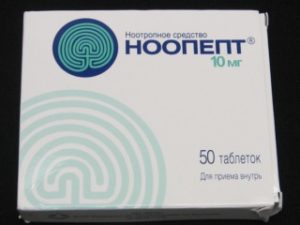
While there is some research on this synthetic nootropic, most of what we know about Noopept is through anecdotal reports on the internet — i.e., /r/nootropics. Here’s what we think Noopept accomplishes for cognition:
- Increased anabolic processes in the hippocampus
- Induced “sensitizing” effect on cholinergic receptors
- Enhanced general neuroprotection on brain injury
- Spiked neuronal excitement on NMDA and AMPA receptors
As a result, Noopept achieves similar results to piracetam, only quicker and to a much, much more noticeable degree. The term used to describe the Noopept experience is “psychostimulatory” which I think is fitting. Not a bad brain booster for every-now-and-then cognitive enhancement. More on Noopept.
L-Phenylalanine
Often supplemented with L-tyrosine, L-Phenylalanine is a similar precursor amino that naturally converts to L-tyrosine in the brain’s catecholamine conversion pathway. In turn, L-tyrosine converts to the likes of dopamine and norepinephrine, enhancing the brain’s abilities to stay awake, energized, and focus. If we’re following the Catecholamine Hypothesis, which links poor catecholamine activity to hyperactivity and ADD/ADHD, then we can view L-phenylalanine (and L-tyrosine) as an attention sharpener.
For the average, healthy nootropic user, L-phenylalanine largely represents quick, reliable mood boosts. My suggestion: stack L-phenylalanine with a quality L-tyrosine source. And don’t forget B vitamins, which are important co-factors in the conversion processes for catecholamine synthesis.
Oat Straw Extract

Not oat meal, and not even plain old oat straw. But Oat Straw Extract, or Avena sativa extract, a concentrated extract of the calming, focus enhancing components of oat straw. Which sounds sort of strange — oat straw has nootropic properties — but it’s true: Avena sativa, popularized by the likes of Alpha BRAIN, possesses significant alpha brainwave promotion potential, similar to L-theanine (of green tea leaves).
As a nootropic, oat straw extract is interesting. Research suggests this herb may improve focus, attention, and mental processing in acute bursts. However, this doesn’t seem to be much of a long-term option (unless supplemented often — i.e., daily).
There’s no gradual build up of effects, no long-lasting brain boosts. Just short bursts of focus. Although, the benefits seem to become more pronounced with aged, assisting with mild age-related declines in cognition. More on Oat Straw Extract.
Oxiracetam
Similar to other racetams, Oxiracetam more or less delivers the same cognitive enhancement and neuroprotective benefits of piracetam, just in a more pronounced, more immediate way. Anecdotally, oxiracetam has a reputation for being the “logic” racetam, assisting with more computational aspects of thinking… which, admittedly, sounds like BS, but the nootropic community seems to have developed a consensus around this point.
Structurally, oxiracetam is similar to piracetam, and it’s believed to work by enhancing the brain’s acetylcholine activity within neural synapses. Of the racetams, oxiracetam seems more promising than baseline piracetam, earning it a spot as one of the more popular racetam options; yet, it still doesn’t seem as popular as, say, aniracetam or phenylpiracetam. Again, anecdotally speaking.
Passionflower
Often found in sleep aid supplements, Passionflower is a, well… sleep enhancing herb with deep traditional value as a sleep aid among Native American tribes.
Also, did I mention that passionflower is a sleep aid?
Taken as an herbal extract, passionflower seems to help combat anxiety, a common offender in insomnia and sleep disorders, calming an overactive mind for deeper relaxation and better sleep quality. As such, passionflower isn’t exactly a cognitive enhancing nootropic — as many anxiolytic herbs aren’t — but its boost on GABA may help passionflower users achieve better control on their rest levels, resulting in better cognition, performance, and general wellbeing the following day.
Which is a pretty effective and responsible route towards cognitive enhancement.
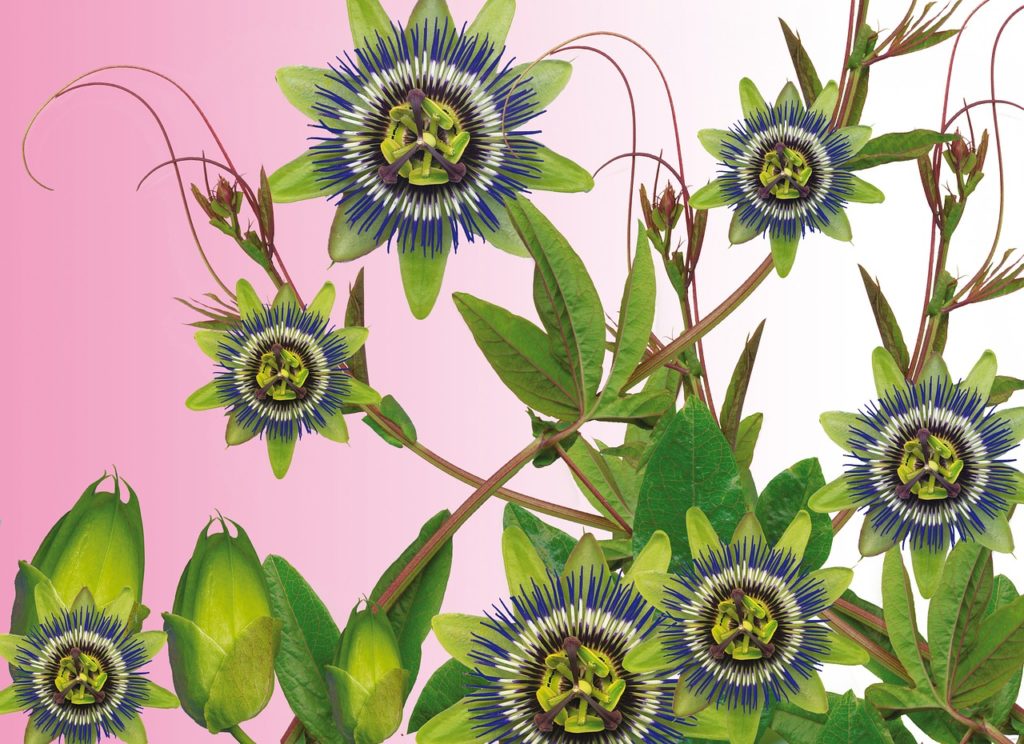
Phenibut
Often compared to picamilon for its pronounced GABAergic action, Phenibut is essentially a synthetic form of GABA, the brain’s calming, anti-excitatory neurotransmitter whose release precedes sleep and relaxation. Developed by the Soviets, phenibut achieves a dee, anxiolytic calm not otherwise achieved by standard GABA supplements, which fail to cross the blood-brain barrier.
Yet, given phenibut’s synthetic status, the nootropic warrants a bit of caution, as the nootropic technically delivers unnatural levels of calm and anti-anxiety effects. Tolerance build up — and, thus, addiction — is a concern with this smart drug.
It’s for this reason that many first turn to picamilon, a bonded combo of natural GABA and niacin, before turning to phenibut’s synthetic GABA boost. Even so, for phenibut does seem to work for ameliorating disruptive mood disorders, such as anxiety, depression, insomnia, and more. More on Phenibut.
Phenylpiracetam
The name explains it all: Phenylpiracetam is essentially the standard piracetam molecule with a phenyl- attachment that intensely amplifies the brain boosting effects of piracetam. Vanilla piracetam does possess promising cognitive enhancement effects, but only after weeks of daily supplementation. Phenylpiracetam, on the other hand, enhances mental and physical performance right now — sometimes boosting brain activity to the point of mania. (For some some… i.e., me.)
Unlike piracetam, which many write off for being too weak, phenylpiracetam is no joke. Its powerful boosts on focus, concentration, and high-order thinking qualify it for the “smart drug” moniker, even earning it a spot on the World Anti-Doping Agency’s banned substance list. So, athletes: avoid phenylpiracetam — stick to other racetams, instead.
And for everyone else: have fun with this guy.
Phosphatidylcholine
As key component of the cellular membrane, Phosphatidylcholine is a phospholipid that’s not only required for the structure and stability of brain cells but supplies one of the key building blocks for acetylcholine synthesis: choline.
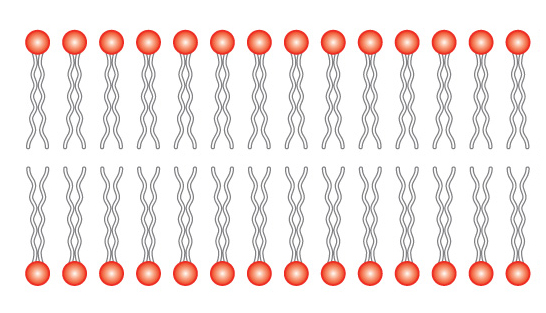
Yet, for the PC-deficient individual, supplementing PC may help with cognitive issues related to memory, learning, and information processing.
Phosphatidylserine (PS)
Similar to phosphatidylcholine, Phosphatidylserine plays a hugely important role in brain cell structure and stability, comprising roughly 15% of the brain’s total phospholipid content. And similar to PC, phosphatidylserine declines with age. This is, ehh, not good, because phosphatidylserine does several awesome things for the brain:
- Contributes to brain cell creation and regeneration
- Optimizes brain cell membrane fluidity
- Enhances brain cell energy metabolism
- Detoxifies the brain and removes damaged cell material
As a nootropic supplement, PS is first and foremost a memory booster, especially for users experiencing age-related cognitive decline. However, younger users may benefit by PS supplementation as well, due to the phospholipid’s ergogenic benefits and long-term neuroprotective effects. More on Phosphatidylserine.
Picamilon
GNC got in trouble for this nootropic in an odd lawsuit. Picamilon is a synthetic nootropic “drug” that binds two natural compounds: GABA + niacin. In other words, all parts of picamilon are natural, yet the binding process between these parts is lab-synthesized — and apparently that’s enough to qualify this nootropic as unnatural. Total bummer for GNC.
Yet, nootropic legality aside, picamilon is an awesome anxiolytic, working better than standard GABA supplements, as niacin helps GABA cross the blood-brain barrier. (Regular ol’ GABA doesn’t do this.) Once in the brain, GABA, a natural “downer” neurotransmitter, decreases overactive cognitive processes, inhibiting stress and anxiety to promote calm and relaxation. It’s great for sociability (for those with social anxiety) and ADD/ADHD (as in reducing ADD/ADHD symptoms).
Due to the semi-synthetic status of picamilon, it’s somewhat harder to come by than other natural nootropic ingredients — and in certain regions it’s sold only via prescription. More on Picamilon.
Piracetam

The OG nootropic, developed by the OG nootropic geek Dr. Corneliu Giurgea, Piracetam is a synthetic cognitive enhancer derived from the neurotransmitter GABA. Under conditions of cognitive decline, piracetam seems to improve various measures of cognition, including memory, learning, and mood. I emphasize “cognitive decline” as it’s somewhat difficult to gauge piracetam’s brain boosting benefits for an average, healthy individual.
The theoretical mechanism of action for piracetam involves a general enhancement of the brain’s cholinergic pathways, namely on acetylcholine receptor sensitivity. As the theory goes, piracetam “sensitizes” acetylcholine receptors, enhancing the response to acetylcholine release. Increased acetylcholine activity contributes to increased memory, learning, and high-order thinking.
To counter the occasional headache that accompanies increased acetylcholine receptor sensitivity, many nootropic users stack piracetam — and other racetams — with a nootropic choline source, such as alpha-GPC and (my preferred choice) citicoline. More on Piracetam.
Pramiracetam
Compared to piracetam, Pramiracetam has fewer clinical studies to back up its use as a nootropic. Even so, this nootropic drug is one of the more popular racetam options, seemingly having a stronger effect than piracetam on memory formation and high-order cognitive processes. Some anecdotal reports rank this as a great nootropic for brain injury recovery as well.
Until we have more clinical human research on this nootropic, there’s not much more to say on this racetam. For the time being, we’re predominantly relying on forum reports to detail the ins-and-outs of pramiracetam supplementation.
Pterostilbene
Similar to resveratrol (except way more bio-available), Pterostilbene is a polyphenol antioxidant sourced from berries. By reducing free radical damage across the brain and body, pterostilbene possesses significant anti-aging value, even assisting with other brain antioxidants. Not only that but this antioxidant may also reduce inflammatory damages as well.
Cognitively, pterostilbene supplementation seems to improve mood and mental performance, potentially reducing symptoms related to anxiety. While I wouldn’t exactly supplement this polyphenol as a standalone nootropic ingredient with expectations of noticeable cognitive change, its potent antioxidant status warrants consideration, especially as you get older. Many brain health enthusiasts gravitate towards blueberries and berry formulas for their immense health benefits. Pterostilbene is one of the more beneficial health compounds sourced from these delicious …fruits?
Berries are fruit, right?
Yea, berries are fruit. More on Pterostilbene.

PQQ
Pyrroloquinone quinone, or PQQ (if you don’t want to sound like a drunk idiot), is a big-time energy booster with a structure similar to B vitamins and an antioxidant status reportedly 5,000 times more potent than vitamin C. Due to its potent antioxidant effects, PQQ is one of the best nootropics for reducing free radical damage in the brain, protecting neurons for the long run.
One of the specific beneficiaries of PQQ’s antioxidant action is mitochondria, the cell’s “powerhouse” organelles that synthesize ATP energy. PQQ seems to protect mitochondria, in turn enhancing their ability to produce ATP energy, in turn amplifying the brain’s overall function and productivity.
Similar to other nootropic antioxidants, PQQ is largely taken for elderly health and cognition. Yet, some research suggests it may also promote healthier mood and sleep balance for younger, healthier users as well. Personally, I enjoy PQQ alongside other mitochondrial protecting antioxidants for the general boost on natural ATP energy production. More on PQQ.
Resveratrol
A hugely popular antioxidant polyphenol, commonly associated with the health benefits of wine (i.e., a single glass of wine; not an entire bottle), Resveratrol is sourced from grapes and berries, as well as the herb Japanese Knotwood. Due to the compound’s well-documented benefits against free radical damage, resveratrol holds the revered status of “anti-aging” compound.
As a nootropic, resveratrol seems to benefit brain health specifically by protecting cerebral circulation and neurons against amyloid protein build up and inflammation. This doesn’t exactly result in any immediate boosts on cognition; yet, older users may experience boosts on memory.
Despite its overwhelming popularity, ptersotilbene seems to be the preferred nootropic polyphenol option, due to its increased bio-availability as compared to resveratrol.
Rhodiola Rosea
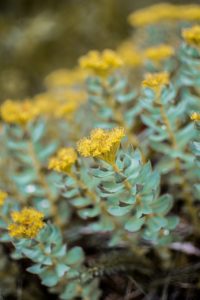
One of my favorite nootropics and herbal adaptogens, Rhodiola Rosea is a traditional Russian herb, used for centuries to help farmers and soldiers thrive in cold, harsh Siberia. A few hefty servings of this root and you’ll see why the people of Siberia enjoyed Rhodiola so much: it works and it works fast, delivering a feel-good relief from physical and mental fatigue and stress.
Often listed as a “brain energizer”, Rhodiola more accurately works as a fatigue reducer. It isn’t so much that you feel energized on Rhodiola as you just don’t feel tired. For this reason, many pre-workout supplements have turned to this adaptogen, as exercisers may notice a significant increase in exercise stamina following a serving of Rhodiola (especially when paired with Ginkgo). Biochemically, Rhodiola seems to work specifically by regulating stress hormone cortisol activity.
It’s a great nootropic herb, yet beware: some manufacturers try to sneak in Rhodiola crenulata, an inferior Rhodiola form, while claiming the health benefits attributed to Rhodiola rosea. More on Rhodiola Rosea.
SAMe
S-adenosyl methionine, or SAMe, is essentially the naturally occurring methionine amino bound to an ATP energy molecule. As a naturally occurring molecule itself, SAMe is found all across the brain and body, assisting with a number of biological activities, such as cell-to-cell communication, membrane structure and fluidity, and the formation of neuronal myelin sheaths.
As a nootropic, SAMe seems most effective at boosting mood, promoting synthesis of “feel-good” neurotransmitters serotonin and dopamine. The name of the game: better brain chemical balance for better mood balance. The reward: better motivation, clearer thinking, and deeper sleep.
Low levels in natural SAMe expression have been linked to mood disorders. Supplementing SAMe may theoretically help.
Schizandrol-A
Sourced from Schisandra chinensis berries, Schizandrol-A is a natural nootropic adaptogen with long-held traditional value in ancient Chinese medicine. Primarily used for liver health, schizandrol-A seems to also have a noticeable effect on brain health, supplying neuroprotective compounds for cognitive longevity and cortisol control. Schizandrol-A may also have a positive effect on dopamine levels.
Having said that, schizandrol-A’s nootropic value hasn’t been fully or sufficiently reviewed via clinical research, so much of this adaptogen’s appeal stems from its colloquial use. Yet, the berry extract holds a positive reputation among nootropic enthusiasts nonetheless.
Semax
Another classic Russian nootropic, Semax is somewhat controversial (due to its designer drug status), yet it’s loved by the more advanced nootropic users for its direct stimulation on the central nervous system without the usual side effects of Adderall, Ritalin, etc. — or at least this is the anecdotal reputation of Semax.
For the most part, this description holds true: Semax boosts cognitive performance without the jaw-clenching stimulation typically associated with pharmaceutical stimulants. The drug seems to work by modulating neurotransmitter receptors for various brain chemicals, including dopamine, acetylcholine, serotonin, and more. Stress and anxiety decrease as a result of Semax’s neurochemical modulation. Mental performance — e.g., verbal acuity — ramp up.
In Russia, Semax classifies as a “Vital & Essential Drug”, often prescribed for neurodegenerative disorders. Otherwise, the drug’s predominantly used for recreational cognitive enhancement. Due to Semax’s way low oral bioavailability, the two methods of administration are via nasal spray or injection.
Take note: long-term Semax use has not been greatly studied. As far as side effects go, short-term Semax usage seems generally fine; although, (temporary) hair loss seems to be a common concern by frequent Semax users.
St. John’s Wort
One of few serotonergic acting herbs, St. John’s Wort (as the name may imply) has a rich history of traditional and mystical value; although, today, the herb is primarily valued for its antidepressant properties linked to its effect on neurotransmitter serotonin. Depending on where you’re at on the whole spiritual spectrum, the idea of St. John’s Wort warding off “evil” vs. warding off depression might be simply a matter of semantics.
The complete bio-active profile of St. John’s Wort includes antioxidants, amino acids, and (the compounds of mood boosting interest) hypericin and hyperforin. These two bio-active constituents seem to work by modulating the expression of neurotransmitters related to mood, including serotonin, dopamine, and GABA.
St. John’s Wort is somewhat of a controversial herb, due to its pronounced effects on serotonin. It’s certainly not an herb you’ll want to take if you’re already on pharmaceutical antidepressants, namely SSRIs. Yet, for mild depression concerns, St. John’s Wort has a fairly legendary track record. More on St. John’s Wort.

Sulbutiamine
You take one vitamin B1 (thiamine) and connect it to another vitamin B1 (thiamine), and there you go: Sulbutiamine. While viewed as a synthetic nootropic drug, sulbutiamine is basically comprised of all natural parts. It’s the synthesis of these parts’ union that qualifies sulbutiamine as a synthetic. And by synthesizing this B1-B1 bonded duo, sulbutiamine allows for this B vitamin to better cross the blood-brain barrier, improving brain energy metabolism and neurotransmitter synthesis.
The result: better energy and decreased anxiety, namely social anxiety, as indicated by this nootropic’s special status as a sociability enhancer.
Even though sulbutiamine is essentially comprised of all natural parts, the “drug” does come with tolerance concerns. A gradual weakening of effects has been observed with frequent, daily use, so use sparingly or with a well-designed on-off cycling schedule. More on Sulbutiamine.
Taurine
I’ve heard several different reasons as to why energy drinks supply Taurine, and they don’t all quite add up, giving this amino somewhat of a cool “mystery” appeal. Yet, judging by the research, this amino primarily accomplishes two things:
- Increased antioxidant resistance to free radical damage.
- Enhanced sedative effects via GABA activity modulation.
This last bio-effect is somewhat ironic, given taurine’s association with energy drinks. As a standalone nootropic ingredient, taurine’s not much of a cognitive enhancer. And the amino is backed by generally weak research. Even so, I’m not against the amino, if it truly offers a significant antioxidant advantage. More on Taurine.
L-Theanine

Who doesn’t enjoy L-Theanine? And if you’re not sure if you enjoy L-theanine, then instead I should ask: “Who doesn’t enjoy green tea?” — because L-theanine is part of what makes green tea so awesome and relaxing and, ahh… nice.
Sourced from Camellia sinensis (green tea leaves), L-theanine is a unique amino nootropic that induces a unique cognitive state, one best described as calm, yet alert focus. L-theanine is an anxiolytic amino, reducing anxiety and overactivity, exception without the usual sedative side effects associated with anti-anxieties. And L-theanine accomplishes this unique cognitive state by:
- Promoting alpha brainwave frequency activity
- Inhibiting over-excitatory brain activity
- Increasing calming “feel-good” brain chemical activity
By enhancing calm at no compromise to focus, L-theanine complements caffeine very well. One of the most basic nootropic stacks is simply L-theanine + caffeine, a well-researched nootropic duo that effects increased mental energy, focus, and performance while reducing the jittery side effects typically associated with caffeine consumption. More on L-Theanine.
L-Tryptophan
You ever hear that Thanksgiving myth about turkey and Tryptophan? The myth that Thanksgiving meals come laden with L-tryptophan, a chemical that induces sleepiness, which explains why everyone wants to take a nap following Thanksgiving dinner. Yeah, that’s not exactly true: you’d have to eat a lot of Thanksgiving turkey to consume enough L-tryptophan for it to have that much of a sedative effect. (In reality, it’s simply the body’s effort at having to digest all that food that forces the body to the couch.)
Thanksgiving lies aside, L-tryptophan is a brain chemical that converts to 5-HTP, which in turn converts to serotonin and melatonin — two important neurotransmitters that accomplish emotional wellbeing and healthy sleep, respectively.
Due to L-tryptophan’s promotion of both serotonin and melatonin, the “nootropic” seems to qualify as both a mood booster and sleep aid. When combined with a melatonin supplement, L-tryptophan may help sustain a positive mood well into the morning, contributing to a happier, healthier tomorrow.
Turmeric
Mm, spicy. Turmeric — or, more accurately, curcumin — is a popular curry special, recognized by its bright, orange-yellow color, valued for its well-documented benefits on brain health and longevity.
Curcumin, turmeric’s primary bio-active constituent, is a potent and powerful antioxidant that benefits cognitive longevity through several brain bio-pathways:
- Increased resistance to free radical damage
- Decreased inflammation
- Reduced amyloid plaque build up
Cognitive decline and serious age-related cognitive disorders strongly correlate with a rise in oxidative damage, inflammation, and amyloid build up. Turmeric’s viewed as a sort of anti-aging superfood for its ability to ameliorate all three of these contributors to age-related cognitive decline.
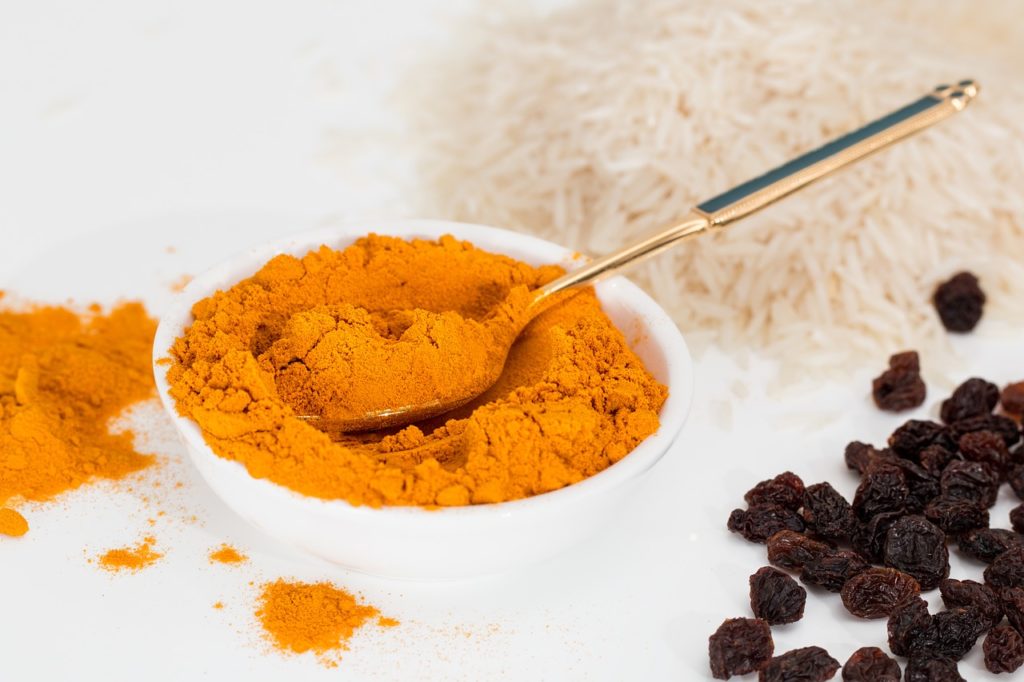
Take note: curcumin has a poor oral bioavailability …when taken on its own. To get the most out of your turmeric/curcmin, be sure to stack it with black pepper — or better yet: black pepper extract (as BioPerine®) — which seems to increase the intestinal absorption rate of curcumin. More on Turmeric.
Tyrosine
Is L-Tyrosine the ultimate anti-stress nootropic? It very well might be, seeing that brain burnout is often a direct result of tyrosine burnout.
When the brain is over-stressed or over-excited, the brain’s natural tyrosine amino reserves deplete as they convert to catecholamine neurotransmitters — e.g., norepinephrine, epinephrine — the brain’s fight-or-flight chemicals. This is why supplementing L-tyrosine seems to restore mood, energy, and focus under conditions of stress and fatigue.
As such, L-tyrosine isn’t so much a cognitive enhancer as it is a cognitive replenisher. Yet, for the sleep-deprived students or always-busy workers, L-tyrosine supplements may feel like cognitive enhancement as compared to the usual daily mehhh…
Due to L-tyrosine’s direct involvement in the catecholamine conversion pathway, this nootropic may possess significant attention benefits for those with ADD/ADHD, as per the Catecholamine Hypothesis. More on Tyrosine.
Uridine
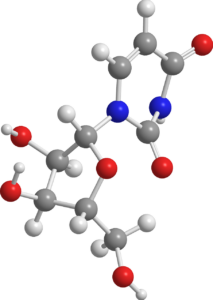
Without Uridine there is no life. Uridine is a fundamental building block to the code of our existence, a nucleotide and key component of RNA. As a nootropic supplement, uridine assists with dopamine release and promotes synaptic plasticity, enhancing the brain’s energy and expansion capacity.
Standalone uridine supplements lack clinical human research, making it somewhat difficult to gauge the full potential of this life-essential compound. However, as a byproduct of citicoline, another awesome nootropic that binds choline to cytidine (a precursor to uridine), uridine seems to possess substantial brain boosting abilities. Keep your eye on this guy. More on Uridine.
Valerian
Sleep — this is the main reason why we supplement Valerian, an ancient medicinal herb long used as a sleep aid (and still used as a sleep aid) botanical. However, compared to other sleep enhancing herbs — e.g., passionflower, magnolia — valerian root’s sleep enhancing effects are somewhat unreliable, as per the research.
Studies find valerian root either contributing to better, deeper sleep… or worse sleep. Which is counterproductive, for obvious reasons. However, focusing strictly on valerian’s sleep aid potential, the herb seems to “work” by inhibiting the enzymes responsible for breaking down GABA, the brain chemical associated with sleep and relaxation.
Aside from benefiting sleep, valerian may possess mood balancing effects. But that’s as far as this herb’s nootropic promise goes. More on Valerian.
Vinpocetine
Similar to huperzine-A, Vinpocetine is a semi-synthetic nootropic that bridges the gap between “natural” and “drug” in terms of nootropic legality. Essentially, vinpocetine is a natural compound, sourced from Vinca minor plants, yet requires synthetic extraction methods to achieve a high concentration for nootropic effect.
As a nootropic, vinpocetine benefits cognition by enhancing cerebral circulation, in turn increasing delivery of oxygen and nutrients to the brain. Additionally, vinpocetine’s antioxidant and anti-inflammatory status helps protect the brain against free radical damage and inflammation.
All-in-all, vinpocetine is a pretty awesome nootropic. Not only does it enhance mental performance via its blood flow boosts but it promotes neuroprotection for long-term cognitive longevity. And the best part: it’s small dosage requirement allows many manufacturers to sneak this nootropic in their limited capsules space. More on Vinpocetine.

